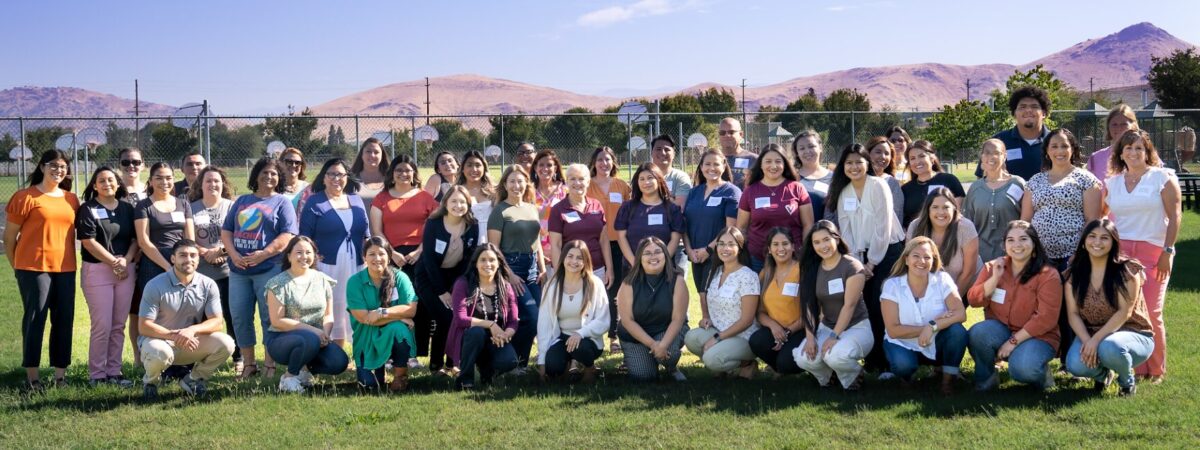
Nestled among orange groves and olive fields, Lindsay is a rural farming community located in California’s central valley, between Fresno and Bakersfield.
While it’s a vibrant, highly engaged community, Lindsay also faces significant challenges, particularly when it comes to poverty. Tulare County–where Lindsay is located–is the second most impoverished county in the nation, and Lindsay is the fifth most impoverished community in the state of California. One hundred percent of students receive free or reduced lunch, almost 10 percent meet state and federal standards for homelessness, and about one-third are English language learners.
For decades, these poverty barriers compounded challenges for students across Lindsay Unified School District. The average high school graduation rate was 67 percent. Only about one in five students attended a four-year college or university, and even fewer actually graduated.
A major issue emerged in the midst of these challenges: teachers, which Lindsay refers to as “learning facilitators,” were leaving in droves. At the end of every school year, Lindsay would lose about a quarter of its teachers—resulting in about 35-55 vacancies per year.
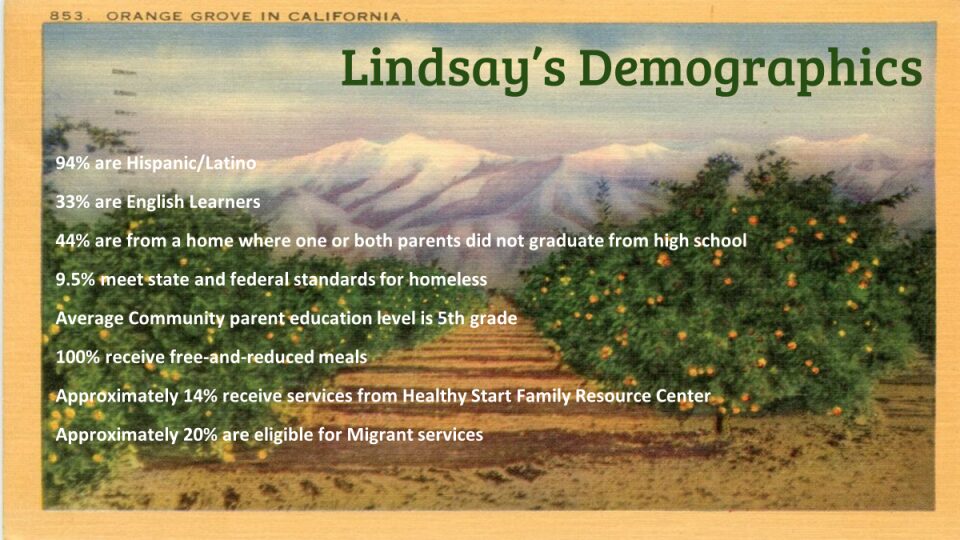
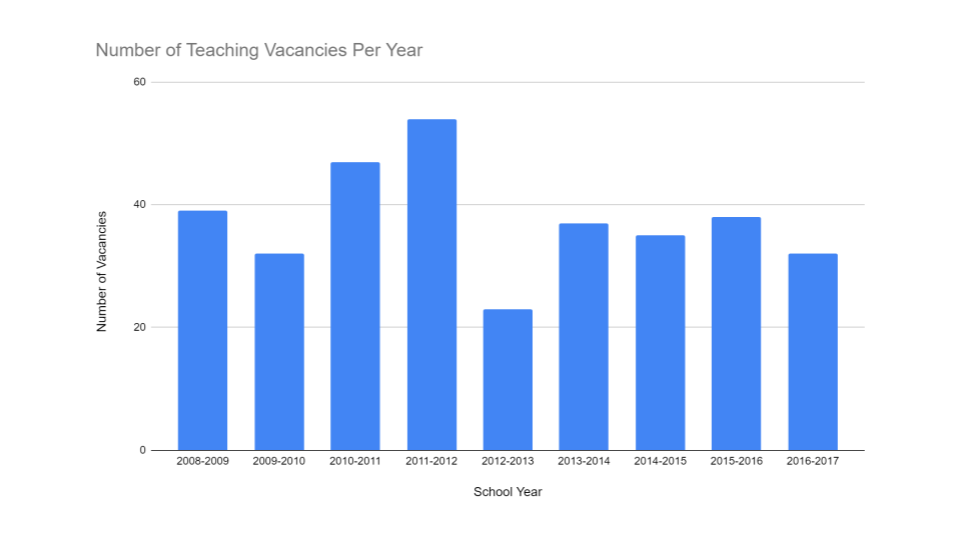
The makeup of the Lindsay Unified School District student body and its surrounding community has presented unique challenges to the district, particularly when it comes to poverty. In years past, these challenges compounded issues the district faced around recruiting and retaining teachers.
When Tom Rooney assumed the superintendency of Lindsay Unified 12 years ago, he became laser focused on helping the Lindsay community tell a different story about the outcomes it could produce for its learners.
“We wanted to reimagine what is possible for children, regardless of the demographic that they come from,” Superintendent Rooney reflected.
Throughout the past decade, Lindsay Unified has been on a journey of transformation, which Superintendent Rooney credits in large part to the Lindsay community.
“Lindsay is driven by a future-focused strategic design that is the voice of the Lindsay community saying, ‘This is what we want for our children,’” Superintendent Rooney shared.
This vision—and the resulting Lindsay Performance Based System that has become a model for other districts across the country—was born from answers to five questions from Lindsay community members:
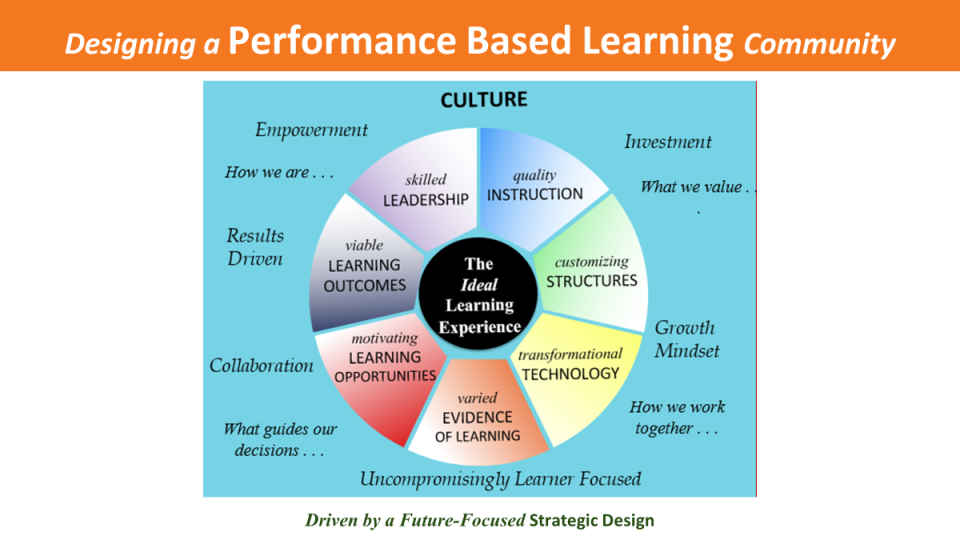
In partnership with the surrounding community, Lindsay Unified School District co-designed a vision and strategic design for the district, which is based largely on performance-based learning. This model has been replicated by districts across the country.
As the district continued to build and refine its strategic vision, it turned its focus to investing in the adults who are leading and teaching in its schools.
“We want to ensure that every learner has the very best learning facilitator every day.”
Lindsay Unified thus embarked on a journey to raise Lindsay’s children to be the district’s future learning facilitators through a two-part model: a pipeline program and a teacher residency program. This model is designed to provide a pathway for Lindsay graduates to obtain a college degree, a teaching credential, and a masters degree, and then return to Lindsay Unified to teach—all at nearly zero cost to participants.
The financial aspect of Lindsay Unified’s model makes it unique and transformative. All participants are eligible to attend college on a forgivable loan and then participate in the teaching residency program; the loan will be forgiven so long as participants return to Lindsay or a surrounding Title 1 district to teach. While it was first supported by a federal grant, the program has continued to receive funding thanks to a variety of funding sources, including additional grants, local district funding, and philanthropic partners that have embraced Lindsay’s vision.
While participants are in college, they participate in the “pipeline” program, which provides them with a holistic support system of tuition assistance, professional learning, mentorship, and credential and job preparation. This pipeline program is supported in part by the district’s foundation, which started in 2016 and was recently awarded an $8 million grant from Mackenzie Scott.
Once students graduate college and leave the “pipeline” stage, they are ready to embark in the residency program.
“We look at preparing our educators like we prepare our doctors,” Superintendent Rooney shared. “They have coursework, but they also have clinical practice.”
Lindsay partners with the Alder Graduate School of Education to facilitate its residency program. Residents are in a learning environment four days per week and learn directly from experienced educators for an entire year. One day a week, they complete their coursework during the day. Throughout this year, they receive a living stipend of $31,400, enabling them to focus on completing the program and becoming learning facilitators.
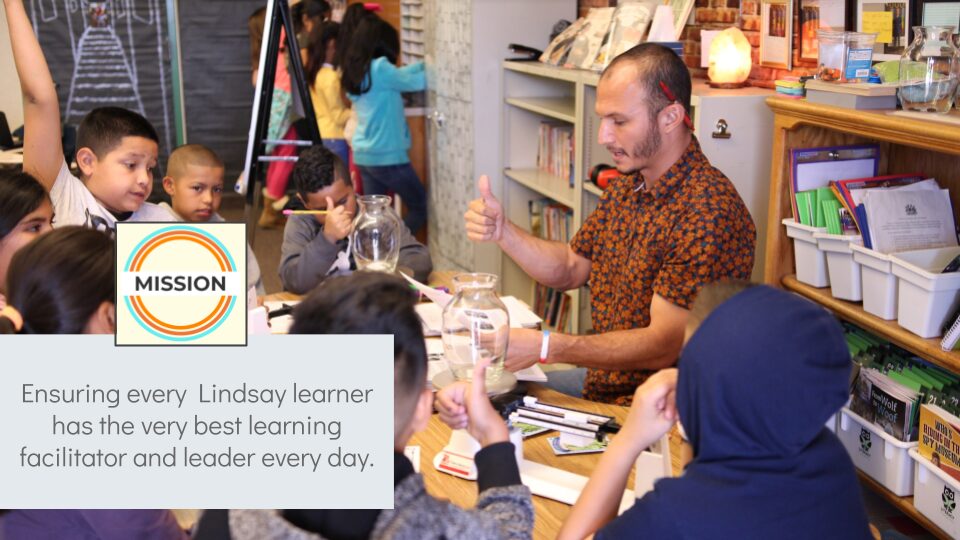
Lindsay Unified School District’s mission to ensure that each of its learners have the very best “learning facilitator” in their classroom is a driving force behind the district’s “grow your own” teacher pipeline and teacher residency program.
Now in its third year, Lindsay Unified’s residency program is exceeding expectations and continuing to grow. The first cohort, launched in 2021-2022, started with nine residents who enrolled, graduated, and are still teaching two years later. This year’s 2023-2024 cohort has 23 residents enrolled, and the program has expanded to include three local districts with similar demographics to Lindsay.
Residents are loving it. “I am able to see the connections between coursework and fieldwork and apply what I am learning, receive feedback, and continue to grow as an educator,” one resident reflected.
This program, along with Lindsay Unified’s overall transformation to a learner-centered model, is delivering promising results for students. Lindsay’s high school graduation rate is now 96 percent, 75 percent of learners attend college after high school, and more than half of learners attend a four-year college or university.
In the coming year, 2024-2025 will enroll 35 residents, which Lindsay hopes to continue for years to come.
For other school districts that are eager to revamp their approaches to teacher recruitment and retention, Superintendent Rooney offers two critical “must haves.”
“Make it community-driven,” said Superintendent Rooney. “We have changed boards, superintendents, and leaders at all levels, but the growth and vision has continued. This is the work of the community. It’s the voice of the community saying, ‘This is what we want.’”
Districts also need to change the narrative and shift mindsets around what school systems can and should do. “Most systems are built for adult convenience. When you change the system to make it all about the learners, things transform.”
Want to learn more about Lindsay Unified’s transformative growth?